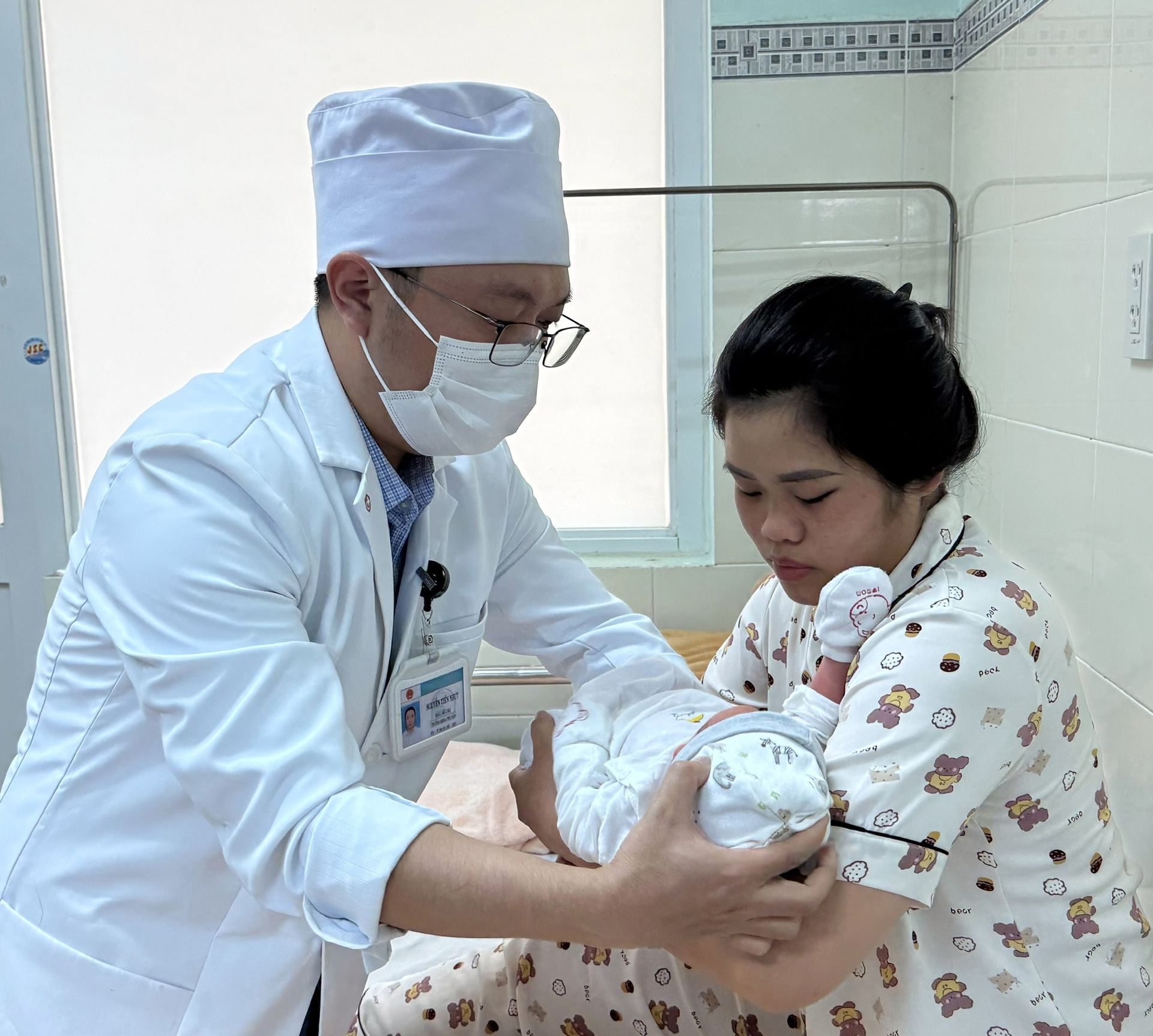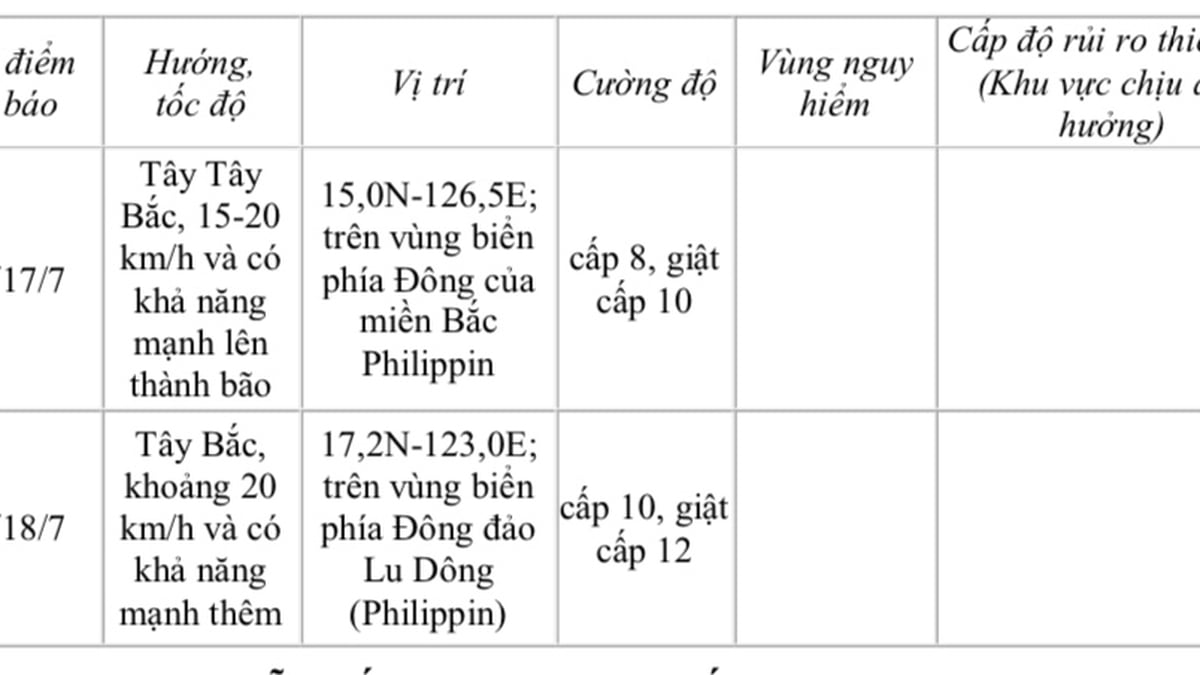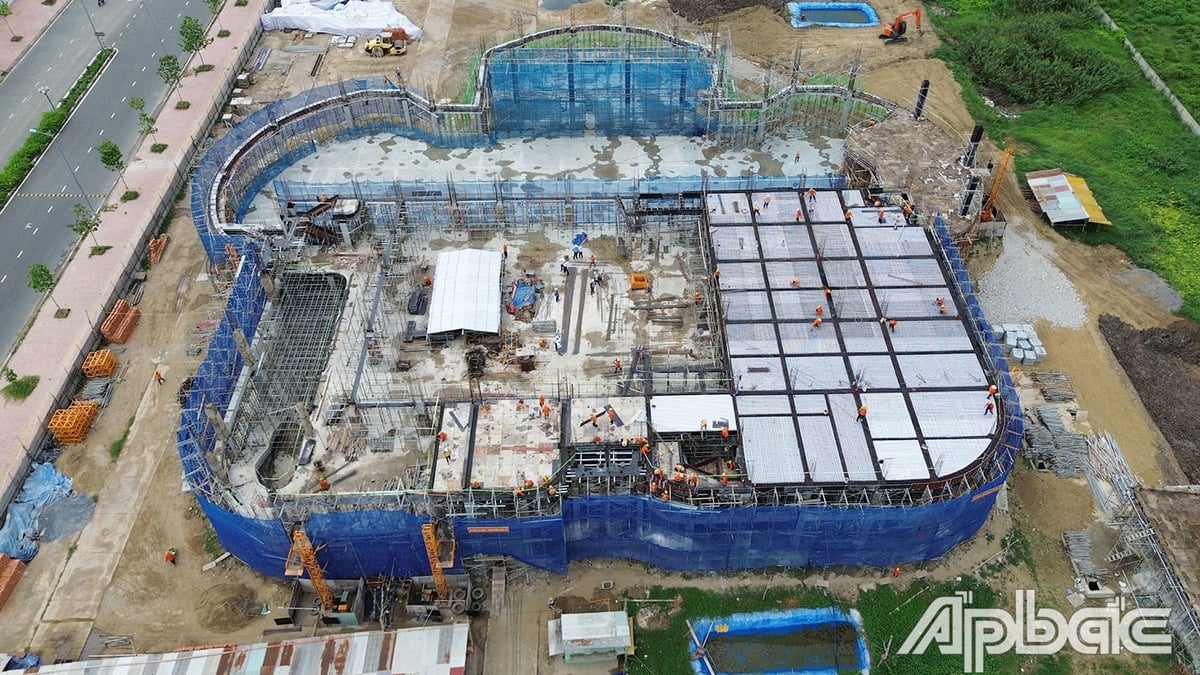Specialist Doctor I Nguyen Tien Nhut - Head of Obstetrics and Gynecology Department, Lam Dong II Hospital guides mothers on how to take care of newborn babies at the hospital |
Implementing Decision No. 1999/QD-TTg dated December 7, 2020 of the Prime Minister approving the Program to expand screening, diagnosis and treatment of some prenatal and neonatal diseases by 2030 (referred to as Program 1999), to date, provinces and cities have achieved some results: the rate of pregnant women participating in prenatal screening and newborns participating in newborn screening increased year after year. However, the rate of prenatal screening for 4 diseases (congenital hemolytic anemia, Down syndrome, Patau syndrome, Edwards syndrome) and newborn screening for 5 diseases (congenital hypothyroidism, G6PD deficiency, congenital adrenal hyperplasia, congenital hearing loss, congenital heart disease) has not yet reached the set target.
In order to have full information on the prenatal and neonatal screening, diagnosis and treatment network to serve the management of the 1999 Program, the Department of Population - Ministry of Health has requested the Department of Health of provinces and centrally run cities to coordinate in providing information on the number of medical facilities in districts and cities with sufficient capacity to provide prenatal screening services for all 4 congenital diseases and disabilities in the basic service package; including public and private medical facilities (if any). Number of medical facilities in districts and cities with sufficient capacity to provide newborn screening services for all 5 congenital diseases in the basic service package; including public and private medical facilities (if any). For provinces and cities that have not yet implemented prenatal screening for all 4 congenital diseases and newborn screening for all 5 congenital diseases in the basic service package according to Decision No. 3845/QD-BYT dated August 11, 2021 of the Minister of Health, please report in detail: Specify the congenital diseases in the basic service package that have not been prenatally screened or newbornly screened; difficulties, obstacles, causes and proposed solutions and measures to overcome them.
Specialist Doctor I Nguyen Tien Nhut - Head of Obstetrics and Gynecology Department, Lam Dong II Hospital said: "All pregnant women who come to the hospital for prenatal check-ups are consulted and have their blood drawn for screening from the first 3 months of pregnancy. Based on the results of peripheral blood cell tests, we filter out pregnant women with the highest risk factors of anemia and suspected diseases related to congenital hemolytic anemia Thalassemia. These pregnant women will be advised to do additional screening tests for their husbands (the baby's father). If the husband shows signs of anemia or is suspected of having Thalassemia, these couples will be advised to go to a more specialized hematology center for specific screening and diagnosis. At Lam Dong II Hospital, screening for Thalassemia has difficulties such as: pregnant women do not know much about this disease; Thalassemia diagnostic testing is a specialized genetic test, which the hospital has not yet performed, only screening for pregnant women. high risk, then advise and guide to a more specialized center. Therefore, we propose that the Clinic supplement images to promote knowledge for pregnant women; implement non-invasive prenatal screening tests, including genetic testing. Lam Dong II Hospital has performed free newborn screening by taking blood from the baby's heel, screening for 5 metabolic-related diseases.
The purpose of screening is to help couples give birth to healthy children who are capable of developing both physically and mentally. Avoiding the economic burden on families and society because of having to raise children with diseases and congenital disabilities that current medicine cannot treat.
Prenatal screening is an ultrasound of the fetus and blood tests of the mother while the fetus is still in the womb to determine whether the fetus is normal or not. The purpose of prenatal screening is to detect early whether the fetus is sick while still in the womb, to intervene promptly for the fetus, or to decide to terminate the pregnancy for fetuses with genetic diseases or congenital malformations that cannot be treated with medicine.
Newborn screening (after birth) is an ultrasound and blood test of a newborn to determine whether the child has any diseases or is normal. The purpose of newborn screening is to detect early newborns with endocrine, metabolic, genetic disorders, etc., and treat them promptly so that the child can develop normally physically and mentally.
Subjects and time of prenatal screening: If the pregnant woman has one of the following medical conditions, the risk of giving birth to a child with birth defects or genetic disorders is very high: Miscarriage in previous pregnancies; stillbirth in previous pregnancies; previously giving birth to a child with birth defects or genetic disorders such as Down syndrome, Edward syndrome... Family members with birth defects or genetic disorders; before and during pregnancy, the pregnant woman was exposed to toxic substances (herbicides, pesticides, smoking, radiation, flu during pregnancy...). Older pregnant women (over 35 years old), husbands over 55 years old; husbands exposed to toxic substances (radiation, toxic chemicals). In addition to pregnant women with high risk as above, pregnant women with low risk should also participate in screening, because low risk does not mean that the above diseases do not occur. According to statistics, birth defects account for 3% of children.
Time to perform prenatal screening tests: Fetal ultrasound, best between weeks 11 and 14. If the fetal nuchal translucency is greater than 3 mm, continue to do maternal blood biochemical tests; if there are signs of suspected disease, continue to do chorionic villus sampling or amniocentesis for definitive testing (performed at week 16).
Newborn screening time: All babies born 36 - 48 hours need to have 2 drops of blood taken from the heel for screening to detect diseases. If the baby is premature, the blood test will be done 7 days after birth. The blood test is performed by hospital medical staff. After the blood is taken, the blood sample is sent to Tu Du Hospital for testing to detect diseases. If the baby is sick, the hospital will notify the family of the results and instruct the family to take the baby for early treatment within the 2nd week. Children who are treated early will develop normally like other children.
Source: https://baolamdong.vn/xa-hoi/202504/gop-phan-nang-cao-chat-luong-dan-so-b806bae/





















































![[Maritime News] More than 80% of global container shipping capacity is in the hands of MSC and major shipping alliances](https://vphoto.vietnam.vn/thumb/402x226/vietnam/resource/IMAGE/2025/7/16/6b4d586c984b4cbf8c5680352b9eaeb0)













































Comment (0)